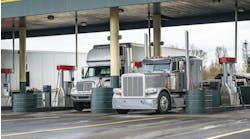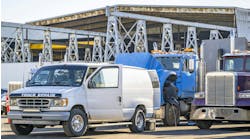Improving operating efficiency is top of mind for most business owners, including fleet owners. However, in order to make improvements, key data must be collected and analyzed. Following the analysis, actions can then be taken to fix deficits.
There are a number of metrics fleets can track that can lead to improvement. Dave Beaudry, director of logistics engineering and consulting at NationaLease, shared some of the factors he believes are most important.
See also: ETA and on-time deliveries
Asset utilization: When trucks are not running, the fleet is not making money, therefore utilization tracking is critical not at the asset level. It must be much more granular than just looking at utilization fleetwide. Monitoring trailer utilization helps ensure the fleet has the right amount and equipment type. While more trailers than tractors is the rule of thumb, looking at trailer utilization will help ensure the correct ratio of tractors to trailers.
Cost-per mile: A standard unit of measure in transportation is cost-per-mile. Fuel consumption, driver pay, and other factors are frequently viewed by the mile. Understanding the cost-per-mile metric and how it affects your fleet is essential to maintaining efficiency.
Cost-per-stop: When operating a fleet in a multistop operation, looking at the expenses associated with each delivery is vital. Cost-per-stop looks at fixed costs plus variable costs for each stop.
Detention time: Where are your drivers being detained and for how long? Tracking this allows you to present facts and figures with your customers who are causing the detention to try to develop solutions.
Driver hours: Keeping close track of the hours of each driver individually can assist in maintaining a healthy and happy driver pool. In these unprecedented times of driver shortages, there is significant pressure to utilize drivers for every legal driving hour. However, driver fatigue increases—and therefore driver safety decreases—after 55 weekly driving hours.
Empty miles: To look for backhaul opportunities that can increase profitability, you have to track any empty miles your fleet may be running.
Safety: Speeding, hard braking, and fast acceleration are indicators of potentially unsafe driving behaviors. Coaching drivers about how they can improve based on the data collected can facilitate marked increases in overall fleet safety.
Beaudry shared one final thought about data: “When looking at any of these metrics, the quality of the data is paramount.” Be sure that you have systems and processes that ensure your data is accurate.
Jane Clark focuses on managing the member services operation at NationaLease as vice president of member services. She works to strengthen member relationships, reduce member costs, and improve collaboration within the NationaLease supporting groups.



